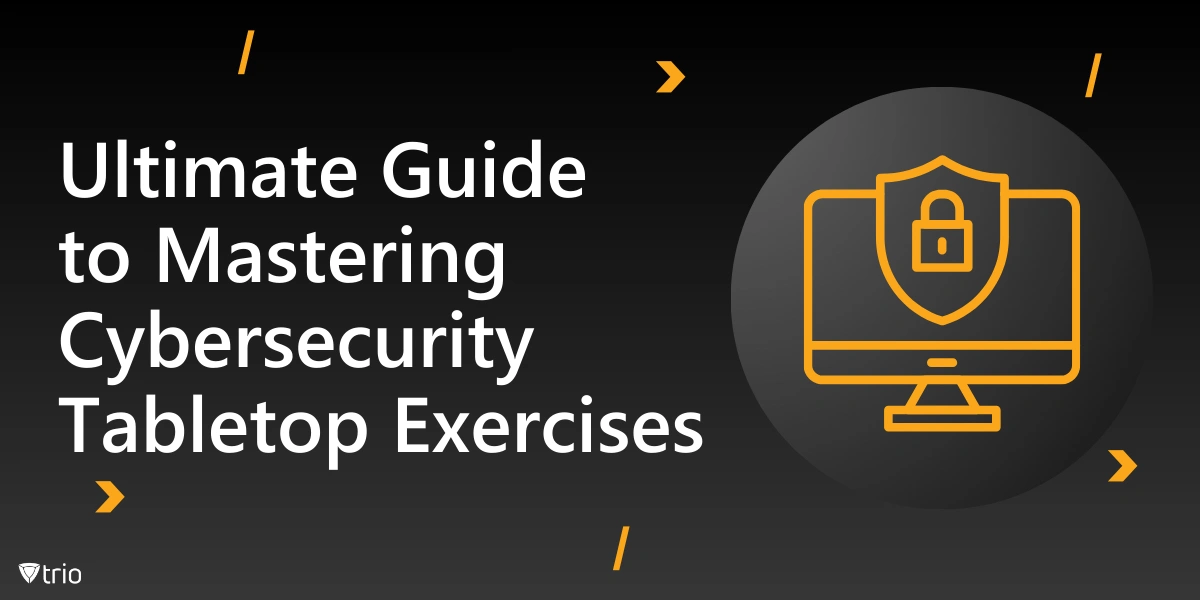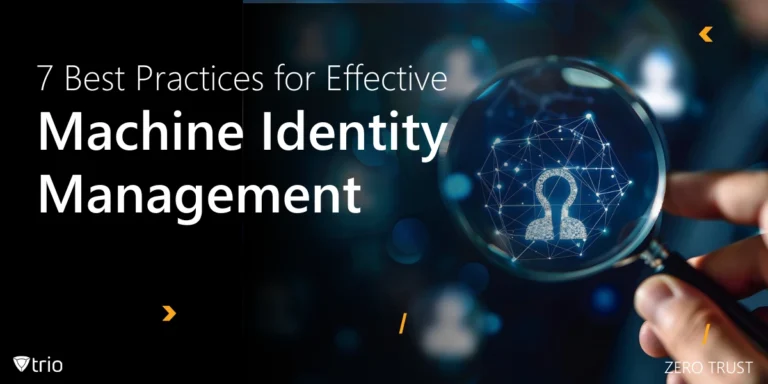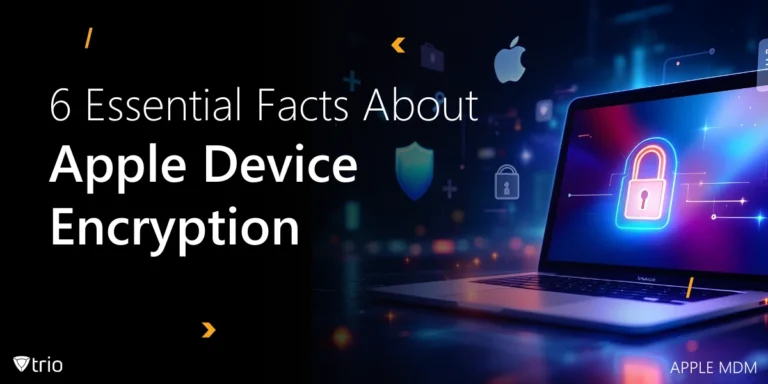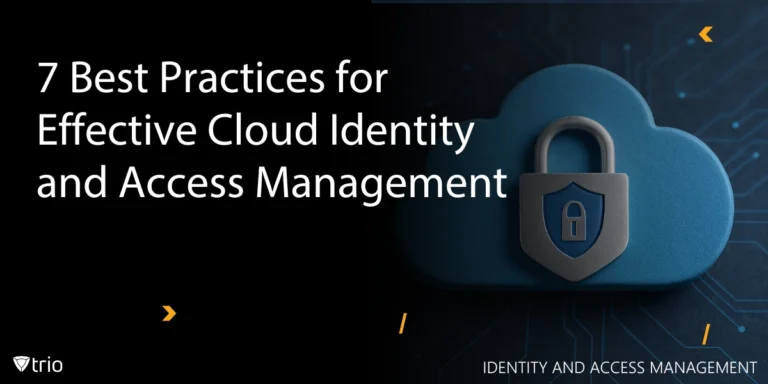From sophisticated ransomware attacks to insider threats and supply chain vulnerabilities, the need for robust cybersecurity measures has never been more critical. One powerful tool in an organization's arsenal is the cybersecurity tabletop exercise - a strategic simulation designed to test and enhance incident response capabilities.
As cyber incidents continue to make headlines, many organizations are recognizing the importance of proactive preparation. Tabletop exercises offer a unique opportunity to assess readiness, identify gaps in security protocols, and refine response strategies - all without the high stakes of a real-world attack. By simulating various scenarios, from data breaches to system compromises, these exercises enable teams to practice their incident response plans in a controlled environment.
In this comprehensive guide, we'll explore the intricacies of cybersecurity tabletop exercises, their significance in today's threat landscape, and how organizations can leverage them to bolster their cyber resilience. We'll delve into best practices, examine real-world scenarios, and provide insights on how to design and implement effective exercises tailored to your organization's unique needs.
Whether you're a seasoned security professional or new to the concept of tabletop exercises, this article aims to equip you with the knowledge and tools necessary to enhance your organization's cybersecurity posture. Let's dive in and discover how these strategic simulations can transform your approach to incident response and overall security readiness.
Defining Cybersecurity Tabletop Exercise
Cybersecurity tabletop exercises are structured, discussion-based simulations designed to test an organization's ability to respond to various digital security incidents. These exercises bring together key stakeholders from across the organization to work through hypothetical scenarios, mimicking the decision-making processes and communication flows that would occur during an actual cyber event.
Unlike full-scale drills or live simulations, tabletop exercises do not involve real-time system interactions or physical responses. Instead, they focus on the strategic and communicative aspects of incident response, allowing participants to explore different approaches and identify potential weaknesses in their current plans.
The primary goals of these exercises include:
- Evaluating the effectiveness of existing incident response plans
- Identifying gaps in processes, communication channels, or resource allocation
- Clarifying roles and responsibilities among team members and departments
- Improving coordination and decision-making under pressure
- Raising awareness of potential threats and appropriate response strategies
Tabletop exercises can vary in complexity and scope, ranging from simple scenarios focused on specific threats to complex, multi-phase simulations that test an organization's entire incident response framework. By regularly conducting these exercises, organizations can continuously refine their cybersecurity strategies and build a culture of preparedness.
Key Components of a Tabletop Exercise
To ensure a productive and insightful experience, cybersecurity tabletop exercises typically include the following components:
Scenario Development: Creating realistic and relevant scenarios that challenge participants and reflect potential threats to the organization.
Participant Selection: Identifying and involving key stakeholders from various departments, including IT, legal, communications, and executive leadership.
Facilitation: Appointing a skilled facilitator to guide discussions, prompt critical thinking, and ensure the exercise stays on track.
Documentation: Recording observations, decisions, and action items throughout the exercise for later review and analysis.
Debriefing: Conducting a thorough post-exercise discussion to identify lessons learned and areas for improvement.
The Importance of Tabletop Exercises in Modern Cybersecurity
In an era where cyber threats are constantly evolving and increasing in sophistication, tabletop exercises have become an indispensable tool for organizations seeking to fortify their digital defenses. These simulations offer numerous benefits that contribute to a more robust and resilient cybersecurity strategy:
Proactive Preparation: By simulating potential incidents before they occur, organizations can identify and address vulnerabilities proactively, rather than reacting to real-world breaches.
Cost-Effective Training: Compared to full-scale simulations or actual incident response, tabletop exercises provide a cost-effective means of training staff and testing procedures.
Cross-Functional Collaboration: These exercises bring together diverse teams, fostering better understanding and cooperation across departments.
Regulatory Compliance: Many industries require regular testing of incident response plans. Tabletop exercises can help meet these compliance requirements while improving overall security.
Continuous Improvement: Regular exercises allow organizations to iteratively refine their response strategies, adapting to new threats and organizational changes.

Common Scenarios: Cybersecurity Tabletop Exercise Examples
To effectively prepare for a wide range of potential threats, organizations should consider incorporating various scenarios into their tabletop exercise program. Here are some common scenarios that can help teams hone their incident response skills:
Ransomware Attack: Simulate a ransomware infection that encrypts critical data, forcing the team to decide whether to pay the ransom or attempt recovery from backups.
Data Breach: Create a scenario where sensitive customer information is exposed, requiring rapid containment and communication strategies.
Insider Threat: Design an exercise around a malicious insider with privileged access, testing the organization's ability to detect and mitigate internal threats.
Supply Chain Compromise: Simulate a security breach originating from a third-party vendor, challenging the team to manage both technical and business relationship aspects.
Distributed Denial of Service (DDoS) Attack: Test the organization's ability to maintain operations and mitigate service disruptions during a large-scale DDoS attack.
Social Engineering Incident: Create a scenario involving a successful phishing attack or impersonation scheme, focusing on both immediate response and long-term prevention strategies.
Zero-Day Vulnerability Exploit: Simulate the discovery and exploitation of a previously unknown vulnerability, testing the team's ability to respond without established patches or mitigations.
Cloud Service Outage: Design an exercise around a major cloud provider experiencing an outage, challenging the team to maintain business continuity and manage dependencies.
Designing Effective Cybersecurity Tabletop Exercises
Creating impactful tabletop exercises requires careful planning and consideration. Here are key steps to design exercises that challenge participants and yield valuable insights:
Define Clear Objectives: Establish specific goals for the exercise, such as testing communication protocols or evaluating decision-making processes under pressure.
Develop Realistic Scenarios: Craft detailed, plausible scenarios that reflect current threat landscapes and are relevant to your organization's industry and operations.
Tailor Complexity: Adjust the exercise's difficulty based on participants' experience levels and the organization's maturity in cybersecurity practices.
Incorporate Time Pressures: Introduce time constraints to simulate the urgency of real-world incidents and test the team's ability to prioritize actions.
Prepare Injects: Create additional information or events to introduce during the exercise, challenging participants to adapt their responses as the scenario evolves.
Establish Evaluation Criteria: Determine how you will measure the exercise's success and participants' performance.
Plan for Debriefing: Allocate sufficient time for post-exercise discussion and analysis to maximize learning opportunities.
Best Practices for Conducting Cybersecurity Tabletop Exercises
To maximize the effectiveness of your tabletop exercises and ensure they deliver tangible benefits to your organization's cybersecurity posture, consider the following best practices:
Engage Senior Leadership: Involve executives and decision-makers in exercises to ensure buy-in and demonstrate the importance of cybersecurity preparedness across all levels of the organization.
Create a Safe Environment: Encourage open discussion and creative problem-solving by emphasizing that the exercise is a learning opportunity, not a performance evaluation.
Use Realistic Documentation: Incorporate actual company policies, procedures, and communication templates into the exercise to test their effectiveness and familiarize participants with existing resources.
Rotate Roles: Allow participants to assume different roles during exercises to broaden their understanding of various perspectives and responsibilities within the incident response process.
Incorporate External Expertise: Consider bringing in third-party facilitators or observers to provide fresh insights and an unbiased assessment of your team's performance.
Document Thoroughly: Maintain detailed records of exercise proceedings, decisions made, and lessons learned to inform future improvements and demonstrate due diligence.
Follow Up on Action Items: Establish a clear process for addressing identified gaps or areas for improvement, assigning responsibilities and deadlines for implementation.
Vary Exercise Formats: Mix up the style and structure of exercises to keep participants engaged and test different aspects of your incident response capabilities.
Integrate with Other Security Initiatives: Align tabletop exercises with broader security awareness programs, penetration testing efforts, and risk assessment activities for a holistic approach to cybersecurity.
Regularly Update Scenarios: Keep your exercise content current by incorporating emerging threats, new technologies, and evolving regulatory requirements.
Conclusion: Strengthening Cyber Resilience Through Tabletop Exercises
In an era where cyber threats continue to evolve at a rapid pace, organizations must adopt proactive measures to enhance their security posture. Cybersecurity tabletop exercises stand out as a powerful tool in this endeavor, offering a cost-effective and flexible means of testing and improving incident response capabilities.
By simulating a wide range of scenarios, from ransomware attacks to insider threats, these exercises enable teams to identify gaps in their response plans, clarify roles and responsibilities, and practice critical decision-making skills in a low-risk environment. The insights gained from well-designed and executed tabletop exercises can drive meaningful improvements across an organization's entire cybersecurity framework.
As you consider implementing or enhancing your own tabletop exercise program, remember that the goal is continuous improvement. Each exercise presents an opportunity to learn, adapt, and strengthen your organization's cyber resilience. By committing to this process of ongoing evaluation and refinement, you can build a robust defense against the ever-changing landscape of cyber threats.
Lastly, consider how technology solutions like Trio's mobile device management can complement your cybersecurity efforts. Trio offers comprehensive tools for securing and managing mobile devices across your organization, helping to mitigate risks associated with the growing mobile workforce. To see how Trio can enhance your overall security strategy, we invite you to try our free demo and experience firsthand how advanced device management can integrate with your incident response planning.
In conclusion, cybersecurity tabletop exercises are not just a best practice – they are an essential component of a mature and resilient security program. By investing in these simulations, you invest in your organization's ability to face the cyber challenges of today and tomorrow with confidence and competence.
Get Ahead of the Curve
Every organization today needs a solution to automate time-consuming tasks and strengthen security.
Without the right tools, manual processes drain resources and leave gaps in protection. Trio MDM is designed to solve this problem, automating key tasks, boosting security, and ensuring compliance with ease.
Don't let inefficiencies hold you back. Learn how Trio MDM can revolutionize your IT operations or request a free trial today!





